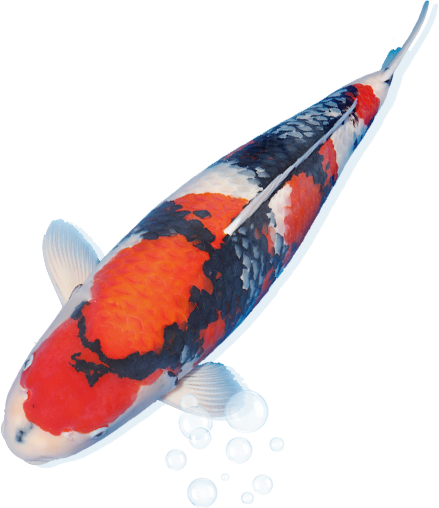
Share
You're sat in your arm chair on the laptop, at your office desk, on your phone. You come across a rather nice looking koi on the World Wide Web. Looking at the koi over and over again, you study the photo. The koi that you initially liked now on closer inspection doesn't quite float your boat. Something isn't quite right. What is the koi missing ? You fail to pin point what exactly is stopping you from committing to the koi and making it yours. You start to obsess over what it is that isn't quite "right" with the koi.
It might not have anything to do with the koi itself, in terms of pattern, body etc. there are other factors at play in a photo that can cause a perfectly good koi to look "odd". Photographing a koi then loading the image onto your computer only to find that there was a huge bubble on the waters surface, or a ripple in the water causing the koi to look seriously deformed. Not all photos of koi can be perfect, especially when photographing in Japan, I've had this happen to me on numerous occasions both here and in Japan.
The koi pictured below is a great example of this. Time photographing in Japan is always limited, especially when you have numerous other breeders to visit on that same day.
A number of people have enquired about this koi since we purchased it back in Autumn. Yet no one has taken the opportunity to make it their own. On discussing this koi with people online, a handful of folk picked up on a few areas that eventually led them to dismiss the koi.
When I got back to the hotel that night and started looking at the photos, I couldn't pin point what looked strange on the photo. In the flesh the koi was fantastic, in the video it looked great! This photo didn't do the koi justice at all. I was a bit gutted, as this koi was one the best out the bunch. I soon figured out what didn't look right. As the photo was taken the gills flared out. Ok, it doesn't sound like a huge issue. But as an overall impression it causes the head to look slightly deformed. This is the major issue with the photo and caused a handful of people to dismiss it immediately. On viewing the video it's clear to see that the head and mouth is fine, yet when you see an issue in a photo it can be very hard to convince yourself otherwise, especially after you've spent hours studying said koi.
Another comment I had from a few people was about the sumi quality. The distinct lack of Motoguro in the pectoral fins and the area of sumi towards the rear (circled) did not fill people with confidence. I had comments such as "that type of sumi will never develop", "very high risk", "will always be underlying sumi" and someone even said "Isa sumi never goes black". What the normal front on photo failed to show was the hint of extremely good quality sumi lower down the koi, you can just about make it out when zoomed in. Also, the Motoguro was so tight to the ball joint in the pec, those flared gills covered it up!
So what did I do ? Well. I had to wait till the koi was back in the UK, properly settled in and have another go at getting a photograph. Nearly 3 months after the initial photo in Japan, I was finally able to get THE photo. The Sumi has developed wonderfully too!

As mentioned in previous posts, Koi need patience. Koi need a chance.
Moral of the story ?
Photos CAN lie.



